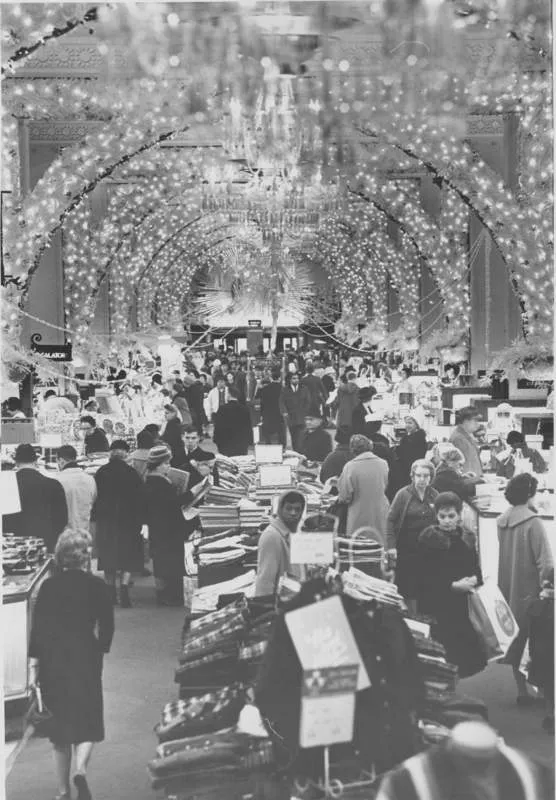A Holiday Shopping Reminder: Do We Really Need That Extra Pair of Jeans?
Meaningful purchases trump frenetic shopping and closets bulging with new clothes
/https://tf-cmsv2-smithsonianmag-media.s3.amazonaws.com/filer/20121129034014Murray_Meisner_secretarydress_470.jpg)
With Thanksgiving behind us and the new year on the horizon, we have officially entered holiday shopping season. Black Friday buying frenzies gets more frenetic every year as ads remind us, repeatedly, to shop early and shop often. It’s tough not to get sucked into the mindset that the only way to be festive is to consume.
It’s stating the obvious, but getting into the holiday spirit still means slowing down and spending time with family and friends. It’s also about being more considered about our wish lists and deliberate about our purchases (Small Business Saturday is one attempt at that).
Those purchase choices especially ring true when it comes to buying clothes. Do we really need another pair of jeans? Consider this: “American families spend an average of $1,700 per year on clothing, and, as a nation, we’re hoarding about 20 billion garments per year,” according to Elizabeth Cline and her book, Overdressed. That’s a lot of stuff. It’s time to think more carefully the next time we’re opening our collective wallets about what’s already hanging in our closets.
In Worn Stories, my collection of people’s stories about clothing and memory, contributors pause on a garment to explore its history. Jill Meisner collects—and wears—vintage dresses designed by her grandfather Murray Meisner. Murray created a clothing line based in New York City’s garment district that was popular among women seeking affordable professional attire in the 1970s and ’80s. On Worn Stories, Jill recounts what it means to wear clothes once designed by her grandfather:

In the 1970s, the New York Times wrote an article about my grandfather, Murray Meisner. They called him “the man who dressed New York.” Through the ’70s and part of the ’80s, his eponymous womenswear company was known for its practical dresses. They were sold at J.C. Penney and Sears to secretaries and other working women. One denim dress he designed became so popular that he had to move all the company’s manufacturing to China to keep up with the demand—that was a really big deal back then.
One day, sometime in 2003, I was bored at work and I Googled my grandfather. I found a few of his dresses for sale on eBay, Etsy, and an online vintage boutique. I started buying the ones I could imagine wearing. That began my Murray Meisner dress collection.
I have six now. When I told my grandfather I was collecting his dresses, he thought it was hysterical. “You’re doing what? Your grandmother would have a heart attack if she knew,” he told me. My grandmother had been one of those New York women who lived on the Upper East Side and didn’t work. She’d never consider wearing one of her husband’s dresses. She wore almost exclusively Chanel. And every Saturday she’d walk up and down Fifth Avenue window-shopping. I guess you could say she was sort of snobby, but there was more to her than that.
In 2004, I started my own company, which required a more professional look. I had to go from dressing like a kid to dressing like an adult. And so strangely, I found myself—as thousands of women had decades before me—slipping into Murray Meisner originals to head to the office.
Granted, we may not all wear clothing with our grandfather’s name on the label, but we all have reasons to hang onto things. And in our culture of throwaway, fast fashion, we can examine what’s already in our possession, make thoughtful purchases and not get completely consumed by holiday madness.
/https://tf-cmsv2-smithsonianmag-media.s3.amazonaws.com/accounts/headshot/emily-spivack-240.jpg)
/https://tf-cmsv2-smithsonianmag-media.s3.amazonaws.com/accounts/headshot/emily-spivack-240.jpg)